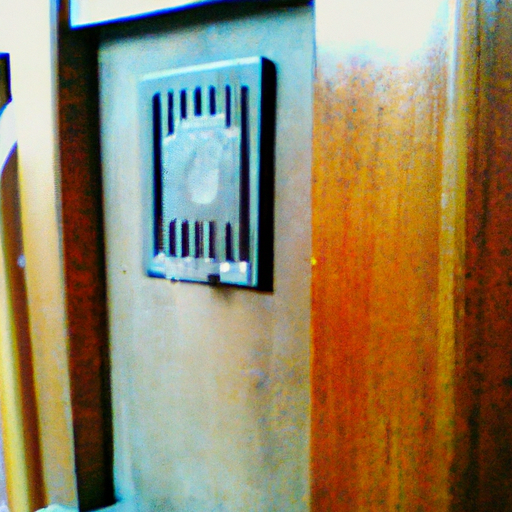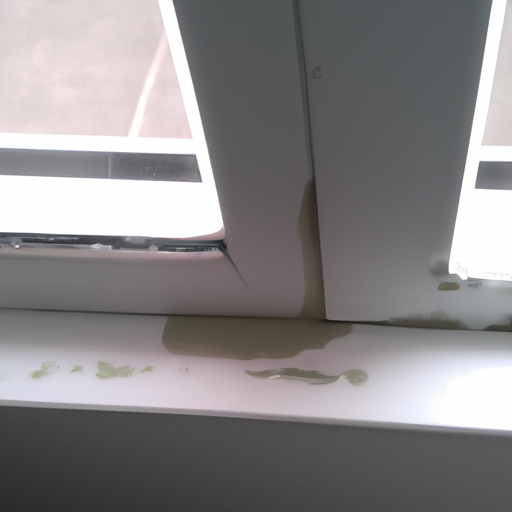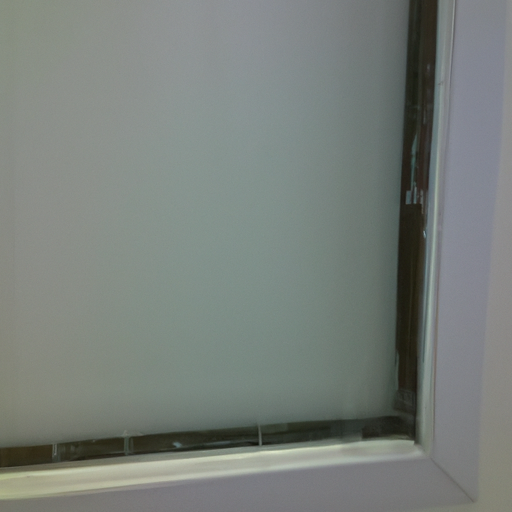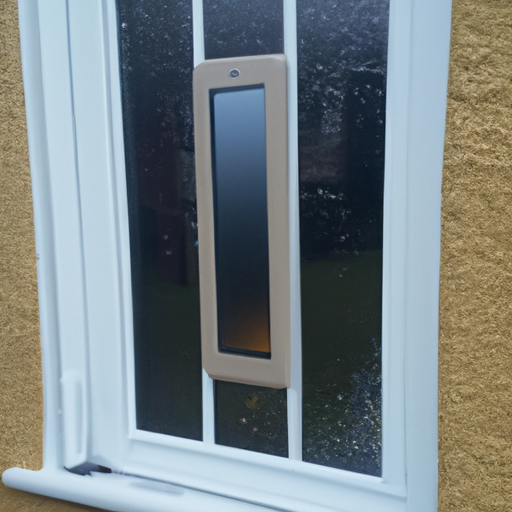
Case Study: Listed Manor House Maintenance in Yeovil
Have you ever driven up a long driveway to a stately manor in Yeovil and thought, yes, this is the kind of building that deserves some extra care? And then wondered how you clean historic windows without waving goodbye to the original glass or the timber frames? I’ve faced that very scenario more than once here in South West England, where heritage homes dot the landscape between Sherborne, Crewkerne, and Ilminster. This case study walks you through a real maintenance programme I led for a listed manor house in Yeovil. It combines practical window-cleaning know-how with respect for statutory guidelines and the seasonal realities of Somerset weather.
Introduction: Why a Case Study to Guide Yeovil Clients (Keywords in real life)
In Yeovil and the wider Somerset area, listed buildings aren’t just pretty faces; they’re living pieces of history that require a careful balance between preservation and modern maintenance. The client wanted a window cleaning plan that would protect fragile leaded lights and delicate timber frames, while still keeping the glazing clear and inviting for guests and residents alike. So we formed a small team, did a thorough survey, and set up a staged maintenance programme that could be scaled to other manor houses and historic properties in nearby towns like Martock, Somerton, and Ilminster.
If you’re interested in broader heritage work, you might also enjoy reading about historical window care in Somerset and how listed windows are maintained without compromising their character. Our blog hub is a good starting point for related topics, and you can browse it here: the blog.
The following is an actionable blueprint you can adapt. It shows how we combined regulatory awareness, practical cleaning techniques, and a realistically phased timetable to deliver safe, CONSISTENT results.
The Manor House: Context and Initial Challenges (Keywords: listed manor Yeovil, heritage windows)
The property sits in a quiet corner of Yeovil, with a façade that features mullioned windows, leaded lights, and timber sash elements. It’s a Grade II listed building with fabric dating back several centuries, and the owners wanted to avoid any aggressive cleaning methods that could disturb historic putty, glass, or fragile putty beads.
Key challenges we identified early included:
- Leaded and stained glass panes with delicate lead cames that can be damaged by harsh chemicals or abrasive tools.
- Timber sashes and frames that require breathability; repainting must use breathable coatings to prevent moisture trapping.
- Access constraints on upper floors, where scaffolding or rope access had to be planned with care to protect surrounding landscaping and neighbouring properties.
- The need to align with Heritage and Conservation requirements, along with UK health and safety regulations for working at height.
For context, Yeovil’s surroundings are cushioned by a mix of country lanes and historic streets; nearby towns like Sherborne and Crewkerne share similar preservation challenges. The project also reminded us to plan with South West England’s seasonal rhythm in mind: damp winters, leaf fall in autumn, and pressure from pollen in late spring.
The Maintenance Approach: Survey, Plan, and Permissions (H2 with keywords)
Initial Survey and Listed Building Considerations (H3)
We began with a documented condition survey of all exterior windows. The aim was to map the type of glass, the condition of putty or lead cames, timber frame rot or warping, and any signs of moisture ingress behind the frames. For listed buildings, this step isn’t mere housekeeping; it’s about identifying issues that could require listed-building consent or a specialist repair. We prepared a schedule of works that prioritised non-invasive cleaning and preservation-first strategies.
Important notes for Yeovil clients: even cleaning activities can trigger permissions if they reveal underlying degradation or require window frame repairs. While cleaning itself isn’t a listed-buildings repair, any recommendations to replace, re-putty, or re-lead parts of the window sheet will need consent from the local conservation officer. If you’re curious about regulations, you’ll likely find related guidance in posts like Listed Windows in Somerset: Maintaining listed windows in Somer t and our overview of “Case Study: Restoring a Listed Manor House in Yeovil”.
Phased Cleaning Plan for a Historic Manor (H3)
We designed a phased plan that kept disruption to residents minimal and allowed the house to stay externally presentable year-round. The plan included:
- Phase 1: Gentle exterior inspection and dry cleaning of dust, bird droppings, and surface dirt (without agitation that could loosen putty or glaze).
- Phase 2: Light cleaning of non-leaded glass first to ensure we refined our technique before touching leaded or fragile panes.
- Phase 3: Targeted cleaning of leaded lights using non-abrasive brushes and purified water; avoidance of harsh detergents near cames.
- Phase 4: Timber frame maintenance aligned with the weather window; use breathable, oil-based or waterborne coatings as appropriate.
During planning, we also factored in local conditions around Yeovil’s centre and outlying villages, ensuring access plans would not disturb the surrounding gardens or hedges. And yes, we kept a careful watch for wind direction and rain in the forecast—Somerset weather can shift quickly, and a windy day isn’t ideal for rope access work.
Access and Safety: UK Regulations in Practice (H3)
Safety is not a optional extra; it’s the foundation of a credible window cleaning programme, especially on historic properties. We followed best practices for working at height under the Health and Safety at Work Act 1974 and the Work at Height Regulations 2005. Our method statements (MS) covered risk assessments, fall protection, and emergency procedures. PPE such as harnesses, helmets, and non-slip footwear was standard, and rope access was used when appropriate instead of heavy scaffold where feasible to preserve the grounds and reduce the risk of masonry damage.
We also stayed mindful of child and public safety when operating around open windows and entrances; the manor’s grounds open to guests, so we scheduled cleaning during low-traffic periods and provided notice signage to deter accidental entry during a window cleaning window. For Yeovil homeowners, this is a gentle reminder that working with listed properties often sits in a broader compliance framework than a typical home project. If in doubt, check practical guidance in our blog about risk and safety in Yeovil window cleaning: Stay Safe: Window Cleaning Health and Safety in Yeovil, Somerset.
Materials, Techniques, and Non-Invasive Methods (H3)
The key principle for listed properties is to use non-invasive, non-abrasive methods that preserve the original materials. Our approach involved:
- Purified or demineralised water as the primary cleaning medium to avoid mineral deposit staining on delicate glass.
- Soft-bristle brushes and microfiber cloths; nothing abrasive that could scratch or dull the glass or frame surfaces.
- Minimal detergent use; when used, only a pH-neutral, soap-free formula in a very diluted ratio.
- Gentle air-drying and squeegee work to avoid pressure or scraping on the surface.
We also leveraged modern tools like pole systems to reach high windows without over-extending ladders into the building’s brittle masonry. And we kept a small stock of rope-access equipment for higher windows where ladders wouldn’t suffice, always with proper fall-arrest devices and a secondary attachment. For Yeovil clients curious about alternatives, there are helpful comparisons in our blog post about Rope Access vs Cherry Picker: Rope Access vs Cherry Picker: Best for Yeovil Properties.
Documentation and Conservation Compliance (H3)
Documentation matters. We produced a maintenance manual for the manor detailing cleaning intervals, inspection checklists, and a record of coatings and timber treatment. The aim is to help future owners and conservators understand what was done, when, and why. This is where internal linking to case studies helps; you can read about a comparable initiative in Case Study: Restoring a Listed Manor House in Yeovil.
It’s also useful to connect the dots with related articles on our site, such as Listed Windows in Somerset: Maintaining listed windows in Somer t to understand how small repairs can affect long-term care.
Execution: From Survey to a Sustainable Yearly Schedule (H2)
Step 1: Baseline Condition and Action List (H3)
We documented every window with notes on type (multi-paned leaded, sash, or modern intact glazing), frame material, and any repairs needed. The baseline helped us prioritise essential work and avoid unnecessary interventions. We also flagged windows requiring scaffolding for safe access and set up a temporary exclusion to protect occupants when the weather was unfavourable.
Step 2: Cleaning Schedule and Seasonal Windows (H3)
Somerset’s seasons govern the windows you can clean safely. In spring, birds and nest patterns dictate a gentler cleaning approach around nesting sites; in late autumn, leaf litter can clog sills and dampness can mirror on timber. We agreed on a yearly cycle: a light wash in late spring, a more thorough mid-summer clean for glass clarity, and a careful autumn “tidy” to prepare for winter. The winter plan prioritised de-icing checks around frames and gutters to prevent moisture intrusion.
Step 3: Access Window: Safety First (H3)
We allocated times for higher windows that aligned with the manor’s tradespeople and kept access routes clear. In many Yeovil projects, ground-floor windows are easy to reach, but upper-storey panes with lead came demand rope access or dedicated scaffolding, and sometimes both—depending on the window’s location and the yard’s layout. If you’re weighing rope access vs cherry picker, our experience suggests rope access suits taller, heritage structures with delicate facades better when performed by a qualified team, while cherry pickers work well for larger, flatter elevations. Here’s aRelated read: Rope Access vs Cherry Picker.
Step 4: Documentation and Handover (H3)
At the end of Phase 1, we delivered a written plan to the owners and archived photos and notes for the site file. This included a recommended coating schedule for timber frames and a log of glass-cleaning records to aid future conservators. If you’re managing a listed property in Sherborne or Somerton, you’ll find this approach helps you justify maintenance costs and future-proof conservation decisions.
Seasonal Considerations for Somerset Weather (H2)
And yes, Somerset’s weather isn’t shy about showing up at your doorstep. Here’s how we adapted the manor’s maintenance calendar to the seasons:
- Spring: Bird activity and potential nesting mean gentle cleaning; avoid disrupting roosting sites and use non-invasive techniques. It’s also a good window to inspect putty joints after winter moisture.
- Summer: Warmer days help the cleaning process and reduce condensation; it’s the best window to perform deeper checks on timber frames and repaint where needed, but avoid peak heat on leaded glass to reduce thermal stress.
- Autumn: Leaves and wind gusts can deposit dirt and create staining on sills. A proactive sweep of sills and internal drainage channels helps prevent damp ingress.
- Winter: Low temperatures and frost can damage coatings and glazing if cleaning is performed with aggressive products. We schedule limited washes on warm, dry days and ensure that frozen surfaces are treated with care to avoid cracks in fragile glass.
For Yeovil homeowners, planning around these seasonal patterns is a practical way to extend the life of historic windows while keeping costs predictable. If you want a more detailed seasonal guide, our blog has relevant posts that tie into this case, such as Preparing Windows for Winter in Yeovil and Autumn Leaf Clearing for Listed Windows.
Costs, Timelines, and Return on Investment (H2)
A maintenance programme for a listed manor house isn’t a one-off price, and it isn’t about chasing a perfect glassy shine at the expense of the building’s character. We approached it as a year-long, budget-conscious plan designed to spread costs and spread risk.
- Initial condition survey: typically 1 day on-site with a report, around £500-£1,000 depending on the manor size and complexity of the glazing.
- Phase 1 cleaning and assessment: 1–2 days for smaller windows, up to 4–5 days for larger manor houses with leaded lights; costs depend on access requirements and scaffolding needs, but a phased approach reduces peak expenditure.
- Ongoing maintenance: quarterly or biannual cleanings with a yearly deep clean for leaded or fragile panes. Expect annual per-window maintenance costs to be in the hundreds per window for very historic panes, reducing per-year overall costs by preventing major restoration work later.
- Timber frame maintenance and coatings: typically scheduled during the dry-season window; this is an investment that improves energy efficiency and prevents costly timber decay.
In our Yeovil case, the owners valued maintaining the building’s character and improving guest impression without triggering expensive repairs. The long view is clear: regular, careful cleaning plus preventive maintenance reduces risk and preserves value—an idea you’ll find echoed in other local projects and articles about how window cleaning adds value to heritage homes.
If you’d like to compare approaches or see a similar case, you can look at Case Study: Restoring a Listed Manor House in Yeovil for a deeper dive into restoration choices and their impact on window integrity.
Practical Takeaways for Yeovil and Somerset Property Managers (H2)
- Start with a professional survey that focuses on preservation and safety rather than just cleanliness.
- Build a phased cleaning plan that respects listed status and uses gentle, non-abrasive techniques.
- Choose access methods that protect the building’s façade. Rope access can be a smarter option for tall, historic façades, while scaffolding is sometimes unavoidable for structural work. See rope access vs cherry picker in Yeovil for reference.
- Document everything. A detailed maintenance manual helps future owners and conservators understand decisions and chemicals used, protecting the property’s heritage value.
- Schedule around Somerset weather. Autumn leaves and winter frosts are bookends to activity windows; plan accordingly so that cleaning days don’t compromise timber coatings or the glazing’s lead cames.
- Use internal links to connect related guidance and case studies so clients can see the bigger picture, like Listed Windows in Somerset and Case Study: Restoring a Listed Manor House in Yeovil.
If you’re actively planning a project like this, consider exploring our homepage for a sense of how we position window cleaning services in Yeovil: window cleaning services in Yeovil. And when you want a broad overview before you call in a contractor, our hub page is a good starting point: the blog.
Moving Forward: A Replicable Yeovil Case Playbook (H2)
This Yeovil case study isn’t just about one building; it’s a practical template you can adapt to similar historic properties in Sherborne, Crewkerne, Ilminster, Martock, and Somerton. It demonstrates how to integrate heritage-conscious cleaning methods with modern health and safety practices, backed by a thoughtful seasonal calendar and a transparent maintenance schedule.
If you’d like to see more about how such programmes are implemented, check the related case studies and guides on our site. For instance, the manor restoration case study offers a look at decisions around leaded glass repair and timber conservation, while the listed Windows in Somerset post emphasises how small actions can preserve long-term integrity for multiple windows across a property.
FAQ: Listed Manor House Maintenance in Yeovil (H2)
- Do I need listed building consent to clean windows? Cleaning itself is typically permitted, but if the work reveals or requires repairs to cames, putty, or frames, you may need consent. Always coordinate with the local planning authority and your conservator.
- How often should a listed manor house windows be cleaned? It depends on the window type and location. A typical plan uses a light wash in spring, a thorough wash in mid-season, and seasonal checks, with a deeper cleanse for leaded or fragile panes every 1–2 years.
- What cleaning products are safe for historic glass? Use non-abrasive brushes, purified water, and mild, pH-neutral detergents. Avoid acids or alkalis that could etch glass or degrade putty and cames.
- How long does a maintenance programme take to deliver visible results? You’ll often begin to see clearer glass after the first couple of cleanings; structural timber and coating work may take longer but pay dividends in reduced maintenance costs over years.
- Is rope access safer than a cherry picker on a listed manor? Both have roles. Rope access is useful for delicate façades with fragile stonework and limited ground space, while cherry pickers can speed access to expansive elevations. Always use a qualified, insured team.
If you want personalised guidance for your property, get in touch for a survey. We’ll tailor a plan that fits your building’s past and your budget today. And if you’re keen to compare options or read more about maintenance planning, don’t forget to explore the blog and related case studies.
Internal Links and References (For Context and SEO)
- Home page: window cleaning services in Yeovil
- Blog hub: the blog
- Related case study: Case Study: Restoring a Listed Manor House in Yeovil
- Listed windows article: Listed Windows in Somerset: Maintaining listed windows in Somerset
- Rope access vs cherry picker post: Rope Access vs Cherry Picker: Best for Yeovil Properties
If you’re chasing more on the heritage-side, our earlier pieces like Preserving Historic Yeovil Windows: Practical Care Guide offer useful context that pairs nicely with this case study.
In short, a thoughtful, well-documented maintenance programme for a listed manor house in Yeovil can protect both the glass and the timber while delivering clear, steady results year after year. If you’d like a no-obligation discussion about your own property, give us a shout. We’re happy to talk through options for Sherborne, Crewkerne, Ilminster, Martock, Somerton, and beyond.
Why Choose Professional Window Cleaning in Yeovil, Somerset?
If you're looking for reliable window cleaning services in Yeovil, Somerset, we're here to help. Our experienced team provides professional window cleaning for homes and businesses throughout Somerset.
Ready to get sparkling clean windows? Contact us today for a free quote!
Related Articles
- Case Study: Restoring a Listed Manor House in Yeovil
- The Complete Window Maintenance Schedule for Businesses in Yeovil
- October Storm-Proofing: Window Care for Listed Yeovil Buildings
This article was written by Yeovil Window Cleaning Services, your local window cleaning experts serving Yeovil, Somerset and surrounding areas in Somerset.
Last updated: 21 October 2025
Need Professional Window Cleaning in Yeovil?
Get crystal clear windows with our professional cleaning service. We serve residential and commercial properties throughout Yeovil and surrounding areas.
Get a Free QuoteRelated Articles

Quick Fixes for Window Mould in Yeovil, Somerset: A Homeowner's Guide
Do you spot mould around your Yeovil windows after a damp Somerset spell? Here’s a practical, neighbourly guide with quick fixes, safe cleaning tips, and seasonal insight to keep mould at bay.

2025 Update: Nano Coatings for Yeovil & Somerset Homes
A neighbourly take on the 2025 nano coating upgrade for Somerset windows. I share real-world tips, practical costs, and local considerations for Yeovil homes and nearby towns.

Energy Efficient Glazing for Somerset Homes: 2025 Update
A neighbourly guide to the 2025 upgrades in energy efficient glazing for Yeovil and Somerset homes. From Low-E panes to smart films, discover practical steps, local considerations, and how to plan a climate-smart upgrade.
